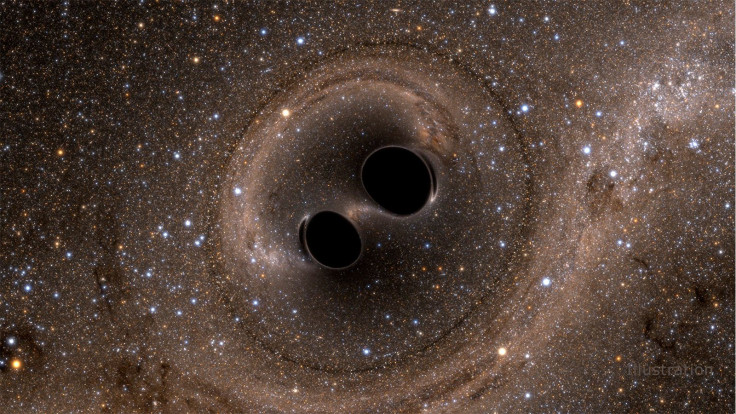3 Black Holes Locked In Orbit Baffles Scientists

Researchers have discovered three black holes currently locked in a dizzying orbit around each other. Despite their observations, the researchers are still not exactly sure what will happen to the three black holes.
The discovery of two black holes merging has been quite common within the scientific community, which is why a team of U.S. and Chinese researchers was baffled after they encountered three massive black holes that are on a collision course with one another.
An abstract for the researchers’ study was posted in Cornell University’s site ArXiv.org.
The black holes have been named collectively as SDSS J0849+1114. They are classified as Active Galactic Nuclei (AGN). The researchers were able to conduct detailed observations on SDSS J0849+1114 through the Hubble Space Telescope, Chandra X-Ray Observatory and the Very Large Array.
Using the data gathered from these facilities, the researchers noted that the three black holes are locked in each other’s orbits. According to their findings, the surrounding gas clouds that the black holes are consuming are moving at a speed of 500 to 1,000 kilometers per second.
They speculated that as the black holes continue to spin around one another, their cluster will tighten until they eventually collide with one another.
The researchers predicted that this massive collision could happen in around two billion years.
Although the researchers are certain that a collision will occur, they are still not quite sure what will happen after. They theorized that the trio could merge and from a supermassive black hole or only two of them might join together, leaving the other one to remain as an independent black hole.
If the three black holes end up forming a supermassive one, the event could explain the nature of the gigantic black hole cores found in elliptical galaxies.
“Such triple merger systems may explain the overly massive stellar cores observed in some elliptical galaxies such as M87 and are expected to be unique gravitational wave sources,” the researchers wrote in the abstract of their study.
“Similar systems may be more common in the early universe when galaxy mergers are thought to be more frequent,” they continued.
© Copyright IBTimes 2024. All rights reserved.





















